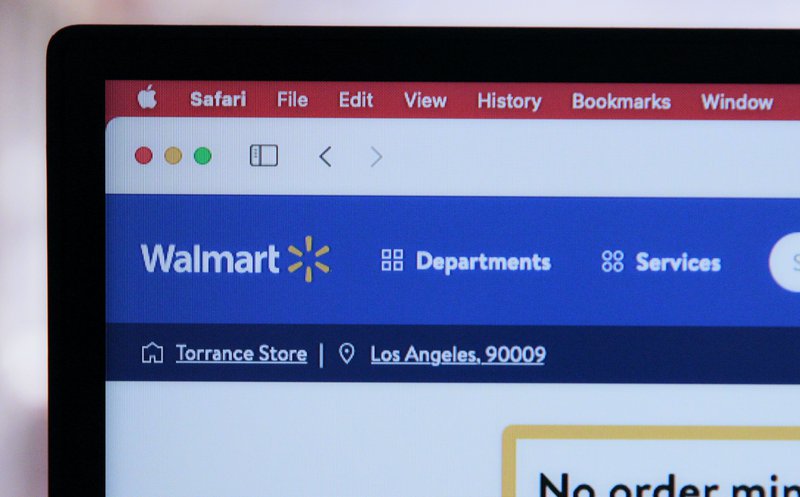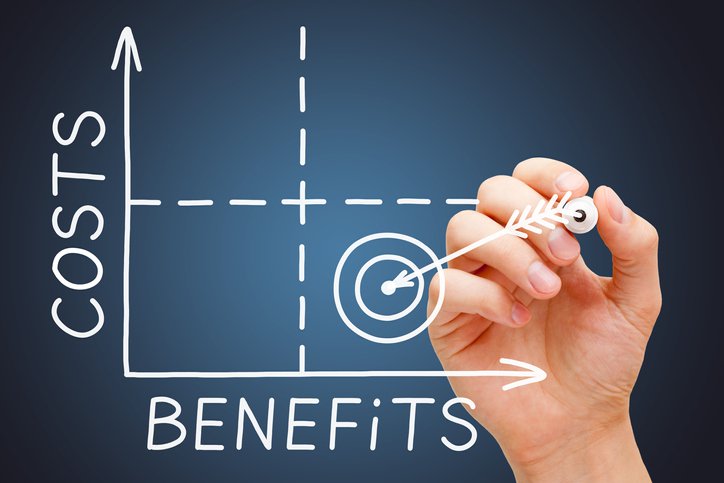In today's fiercely competitive business landscape, gaining a sustainable advantage over rivals has become vital for organizations to thrive and succeed. One of the most widely adopted strategies is known as cost leadership, but what is a cost leadership strategy? Companies aim to offer their products or services at the lowest possible prices while still maintaining profitability. With its ability to attract price-sensitive customers and drive revenue growth, understanding the core principles and intricacies of this strategy is crucial for any business looking to stay ahead in the market.
In this article, we delve deep into what makes the cost leadership strategy effective, exploring its key components and highlighting case studies that exemplify its successful implementation. By unpacking this essential concept, readers will gain valuable insights into how they can adapt and optimize their own organizational strategies to achieve competitive advantage in today's dynamic marketplace.
What Is A Cost Leadership Strategy?
A cost leadership strategy is a business approach that focuses on minimizing costs in order to offer products or services at lower prices than competitors. It involves achieving operational efficiency and creating economies of scale to gain a competitive advantage.
Key Points:
- The cost leadership strategy aims to attract price-sensitive customers as well as those who value affordable options.
- To implement this strategy, companies must streamline their operations, optimize their supply chains, and negotiate favorable deals with suppliers.
- Cost leadership does not mean compromising quality; instead, it emphasizes finding cost-effective ways to deliver the same level of quality as higher-priced alternatives.
Overall, adopting a cost leadership strategy requires careful planning and continuous efforts to control costs while delivering satisfactory quality. By effectively managing expenses and leveraging economies of scale, businesses can differentiate themselves from the competition by offering more affordable options without sacrificing value.
What Are The Major Components Of Cost Leadership Strategy?
A low-cost business model focuses on minimizing expenses to increase profitability. Here are the key components that make up such a strategy:
- Streamlined Operations: A lean and efficient operation is crucial for keeping costs low. This involves optimizing processes, eliminating unnecessary steps, and ensuring smooth coordination between departments.
- Supplier Relationships: Building strong relationships with suppliers can lead to better pricing terms and discounts, reducing procurement costs. Negotiating long-term contracts or collaborating with suppliers for joint cost-reduction initiatives can further enhance savings.
- Economies of Scale: Taking advantage of economies of scale allows companies to spread fixed costs over larger volumes, resulting in lower per-unit production or purchase costs. Pursuing market share growth enables businesses to achieve this cost advantage through increased production levels.
- Investment in Technology: Embracing technology-driven solutions helps streamline operations while reducing labor-intensive tasks and associated expenses. Automation technologies like robotics or artificial intelligence can enhance productivity and efficiency while cutting down on labor costs.
- Product Simplification: Offering simpler products or focusing on standardized designs reduces complexity in both manufacturing and distribution processes, leading to significant cost savings without compromising quality.
By implementing these core elements into their business models, organizations can successfully execute the cost leadership strategy by driving down operational expenses while still providing customers with valuable goods or services at affordable prices.

Implementing Strategic Cost Management Techniques
Implementing Strategic Cost Management Techniques
To effectively implement the cost leadership strategy, companies must employ strategic cost management techniques. These techniques involve closely monitoring production costs, optimizing operational efficiency, and finding ways to reduce expenses without sacrificing quality.
Key Techniques
- Value Chain Analysis: Conducting a thorough analysis of the company’s value chain can help identify areas where costs can be minimized or eliminated altogether. By streamlining operations and reducing waste, organizations can achieve significant cost savings.
- Lean Manufacturing: Adopting lean manufacturing principles is another effective technique for minimizing costs. This approach focuses on eliminating non-value-added activities, such as excessive inventory or unnecessary steps in the production process.
- Supplier Relationship Management: Building strong relationships with suppliers is crucial for not only negotiating favorable pricing but also gaining access to innovative solutions that can lower costs across the entire supply chain.
By implementing these strategic cost management techniques, companies can position themselves as low-cost providers within their industries while still delivering high-quality products or services. This allows them to remain competitive and gain an advantage over rivals who may struggle with higher operating costs.
Unleashing the Power of Economies of Scale
Economies of scale play a crucial role in the cost leadership strategy, allowing companies to lower their production costs and gain a competitive edge. By increasing production volumes, businesses can spread fixed costs over a larger output, resulting in reduced average costs per unit.
- Increased Efficiency: With economies of scale, companies can streamline their operations and improve efficiency. Larger production quantities often lead to more efficient processes and workflows, saving both time and resources.
- Negotiating Power: Large-scale production gives businesses greater negotiation power with suppliers, enabling them to secure favorable pricing terms for raw materials or components. This allows cost leaders to further drive down their overall production costs.
- Price Advantage: The cost advantage gained through economies of scale allows companies to offer products at lower prices than their competitors while maintaining healthy profit margins. This attracts price-conscious customers and helps build brand loyalty among those seeking affordable options without compromising quality.
In summary, harnessing the power of economies of scale is essential for success in implementing the cost leadership strategy. It provides opportunities for enhanced efficiency, stronger supplier relationships, and competitive price advantages that ultimately contribute to creating a sustainable competitive advantage in the market.
The Role of Efficiency-Driven Approaches in Cost Leadership
Efficiency-driven Approaches in Cost Leadership
Efficiency-driven approaches are essential for cost leadership strategies. These approaches focus on streamlining operations, reducing waste, and maximizing productivity to minimize costs. By implementing efficient processes and systems, companies can lower their overall expenses and offer products or services at competitive prices.
- Streamlined Operations: Efficient cost leaders take steps to eliminate unnecessary steps or tasks in their operations. They identify bottlenecks and implement solutions to optimize workflow, reduce downtime, and increase efficiency.
- Waste Reduction: Companies that prioritize cost leadership strive to minimize waste throughout their entire value chain. This includes minimizing material waste during production processes as well as reducing energy consumption.
- Productivity Maximization: Cost leaders emphasize the need for maximum output with minimal inputs. They invest in technologies and training programs that enable employees to work more efficiently, allowing them to produce more goods or services within a given time frame.
Through these efficiency-driven approaches, companies employing the cost leadership strategy can achieve economies of scale by producing large quantities of goods at low costs per unit. This enables them to set lower prices than their competitors while still maintaining profitability.
In conclusion, efficiency-driven approaches play a crucial role in the success of companies using the cost leadership strategy by decreasing operational costs through streamlined operations, reduced waste, and increased productivity. By focusing on improving efficiency throughout all aspects of their business activities, these organizations can maintain a strong competitive advantage by offering affordable products or services without sacrificing quality.
Exploring Cost Advantage Techniques in Practice
Applying Cost Advantage Techniques
Businesses can achieve a cost advantage over their competitors in various ways. One technique is through economies of scale, where larger volumes of production lead to lower average costs per unit. This can be achieved by expanding operations and effectively managing the supply chain.
Another approach is implementing efficient process design and automation. By streamlining operations, eliminating waste, and utilizing technology to automate tasks, businesses can reduce labor and production costs.
Additionally, effective cost management strategies such as outsourcing non-core functions or using low-cost suppliers can contribute to a cost advantage. By leveraging external resources at lower costs while maintaining quality standards, businesses can allocate resources more efficiently.
In today's competitive market landscape, it is crucial for businesses to explore these cost-advantage techniques to gain an edge over rivals. By focusing on achieving operational excellence and finding innovative ways to reduce costs without compromising quality, companies can position themselves as leaders in their industries.
Leveraging Cost Control Methods for Competitive Advantage
Cost control is a critical aspect of the cost leadership strategy, helping businesses gain a competitive edge. By implementing efficient cost management techniques, companies can lower their expenses and offer products or services at attractive prices. One effective method is conducting regular audits to identify areas where costs can be minimized or eliminated altogether.
Another way to leverage cost control methods is by streamlining operations and optimizing resource allocation. This involves eliminating wasteful processes, reducing the use of unnecessary resources, and maximizing productivity. By doing so, businesses can not only reduce costs but also improve efficiency and overall performance.
Furthermore, businesses can benefit from negotiating favorable contracts with suppliers in order to secure the best prices for raw materials or goods. This helps in minimizing production costs while maintaining product quality. Regularly monitoring industry trends and staying updated on technological advancements also play a crucial role in keeping costs under control.
In conclusion, harnessing various cost control methods allows businesses to achieve a competitive advantage by offering affordable prices without compromising on quality. Through regular audits, process optimization, strategic supplier negotiations, and staying abreast of industry developments, organizations can effectively manage their expenses while outperforming competitors in terms of price competitiveness and efficiency.
Innovations in Cost Reduction Strategies
Leveraging technology
Using technology to automate and streamline processes can greatly reduce costs. Implementing software solutions that eliminate manual tasks or increase efficiency can free up valuable resources. Additionally, embracing digital platforms for communication and collaboration decreases the need for expensive travel and physical infrastructure.
Supply chain optimization
Optimizing the supply chain is another effective cost-reduction strategy. By carefully analyzing every step of the supply chain, businesses can identify areas where costs can be minimized. This may involve renegotiating contracts with suppliers, consolidating shipments to reduce transportation costs, or implementing just-in-time inventory management systems.
Outsourcing non-core functions
Outsourcing non-core functions allows companies to focus on their core competencies while reducing expenses. By outsourcing tasks like customer service or IT support, organizations are able to benefit from specialized expertise without having to invest heavily in maintaining an internal team. This not only reduces costs but also increases scalability as external vendors can quickly adapt to changing business needs.
Examples of Cost Leadership Strategy
Some examples of cost leadership strategy include:
- Walmart: By leveraging its massive buying power and efficient supply chain, Walmart is able to offer low prices on a wide range of products.
- Southwest Airlines: By operating a no-frills model and focusing on efficiency, Southwest is able to offer lower fares compared to its competitors.
- McDonald's: Through standardized processes and high-volume purchasing, McDonald's is able to keep its costs low and offer affordable meals.
- Dollar General: By focusing on smaller store formats and offering a limited selection of products, Dollar General is able to keep its operating costs low and provide everyday low prices.
- Ryanair: Known for its no-frills approach to air travel, Ryanair keeps costs down by charging for extras like baggage and in-flight meals, allowing them to offer budget-friendly fares.
- Amazon: With its extensive network of fulfillment centers and advanced logistics capabilities, Amazon is able to keep its operational costs low and pass on the savings to customers.

These examples highlight how companies across various industries have implemented cost leadership strategies to attract price-conscious customers and maintain a competitive edge in the market.
Key takeaways:
- Incorporating technology into operations helps improve efficiency and cut down on unnecessary expenses.
- Optimizing the supply chain leads to lower operating costs by identifying inefficiencies.
- Outsourcing non-core functions eliminates overhead costs associated with maintaining internal teams while gaining access to specialized skills.
By implementing these innovations in cost reduction strategies, businesses gain a competitive edge by offering products or services at lower prices than their competitors while maintaining profitability.

Christian has over ten years of experience in marketing agencies. Currently, he has been dedicating his time to a tech startup and also writing for major publications. He loves podcasts and reading to keep up with the latest trends in marketing.
